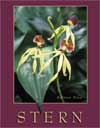1. Growth is defined as an "irreversible increase in volume due
to the division and enlargement of cells." As cells mature, they differentiate
into forms adapted to specific functions. 2. Development is a change in form as a result of growth and differentiation
combined. Cells themselves assume different shapes and forms, which adapt them
to the problem involved in their total volume increasing at a greater rate than
their total surface area. 3. Many growth phenomena are influenced by hormones, which are produced
in minute amounts in one part of an organism and usually transported to another
part, where they have specific effects on growth, flowering, and other plant
activities. Vitamins are organic molecules that function in activating enzymes;
they are sometimes difficult to distinguish from hormones. 4. Darwin and his son noted in 1881 that coleoptiles bend toward a light
source. Frits Went, in 1926, followed up on the Darwinian observations and demonstrated
that something in coleoptile tips moved out into agar when decapitated tips
were placed on it. He called the substance auxin and showed that it could cause
coleoptiles to bend. 5. Three groups of plant hormones that promote the growth of plants
have been found; others are known only for their inhibitory effects. Auxins
stimulate the enlargement of cells and are involved in many other growth phenomena.
Synthetic auxinlike compounds have been used as weed killers and defoliants.
Dioxin, which has caused disease and defects in laboratory animals, is a toxic
contaminant of 2,4,5-T, which is now banned in the United States. 6. Gibberellins promote stem growth without corresponding root growth;
cytokinins promote cell division and can be used to stimulate the growth of
axillary buds. Abscisic acid causes buds to become dormant and apparently helps
leaves respond to excessive loss of water. Ethylene gas hastens ripening of
fruits and is used commercially to ripen green fruits. 7. Senescence is the breakdown of cell parts that leads to the death
of the cell. 8. Plant movements, such as nutations, nodding, twining, contractile,
and nastic, are growth movements that result primarily from internal stimuli. 9. Tropisms are permanent, directed growth movements that result from
external stimuli, such as light (phototropism), gravity (gravitropism), contact
(thigmotropism), and chemicals (chemotropism). 10. Turgor movements result from changes in internal water pressures;
they may be very rapid or take up to 45 minutes to become visible. Turgor movements
include contact movements and sleep movements in which leaves or flowers fold
daily in what is known as a circadian rhythm. Other types of plant movements
include water conservation movements, taxes, and dehydration movements. 11. Photoperiodism is a response of plants to the duration of day or
night. Short-day plants will not flower unless the day length is shorter than
a critical day length, and long-day plants will not flower unless the day length
is longer. Intermediate-day plants have two critical photoperiods; the flowering
of day-neutral plants is independent of day length. 12. Phytochromes are light-sensitive pigments that occur in all higher
plants and play a role in many different plant responses. Phytochromes occur
in two forms, each of which can be converted to the other by the absorption
of light. Daylight generally results in more Pr being converted to Pfr (the
active form) than vice versa. Pr absorbs red light and Pfr absorbs far-red light.
Pfr will convert back to Pr over a period of several hours in the dark; Pr is
stable indefinitely in the dark. 13. The precise mechanism of photoperiodism is not yet fully understood.
Phytochrome interconversions play a role in photoperiodism but cannot be used
alone to explain it. A hormone initiating flowering was once believed to be
present in leaves, but it has never been isolated from plants. Cryptochromes
have functions similar to phytochromes. 14. Each species of plant has an optimum temperature for growth. 15. Dormancy is a period of growth inactivity in seeds, buds, bulbs,
and other plant organs even when appropriate environmental conditions are met.
Quiescence is a state in which a seed is unable to germinate unless appropriate
environmental conditions exist. 16. The change from dormancy to a state in which germination will occur
in seeds is controlled by a variety of factors, including temperature, moisture,
photoperiod, thickness of seed coat, enzymes, and growth inhibitors. Stratification
is the breaking down of dormancy in seeds by keeping them refrigerated and moist
for several weeks. | 


 2003 McGraw-Hill Higher Education
2003 McGraw-Hill Higher Education

 2003 McGraw-Hill Higher Education
2003 McGraw-Hill Higher Education